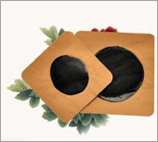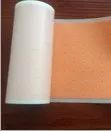 How to Use Topical Ointments
How to Use Topical Ointments
Topical ointments are widely used in dermatology and surgery. Some provide protective effects on the skin, while others offer localized treatment for the skin or mucous membranes. Additionally, some can achieve systemic treatment through the skin or mucous membranes. Common forms of topical ointments include: ointments and plasters.
1
Ointments:
An ointment refers to a semi-solid topical preparation made by mixing drugs with an appropriate base, applied to the skin, mucous membranes, or wounds. Ointments are favored for their convenience, stability, and good solubility properties[1].


Usage: Before use, wash your hands thoroughly. It is best to soak the affected area in warm water for about 2 to 3 minutes to clean it or moisten the skin with a clean, damp cloth. After drying the skin, apply the ointment to the affected area according to the instructions, gently massaging the area to facilitate absorption of the medication. Ointments contain less oil, making them less likely to stain clothing, and are suitable for hairy areas of the scalp and body.
Precautions: If redness, rash, or itching occurs after applying the medication, discontinue use immediately and wash the area with clean water.
2
Plasters:
A plaster is a sticky preparation designed for external application. It is made by mixing drugs with an appropriate base. It is often evenly applied to cotton cloth or other backing materials, sometimes with many small holes on the surface. When applied to the skin, the medication enters through the skin pores into the meridians, achieving effects such as relaxing muscles, activating collaterals, resolving blood stasis, and dispelling cold. Common types include adhesive plasters (i.e., rubber plasters) and medicated plasters (e.g., injury plasters).


Usage: Before using the plaster, clean and disinfect the area of application. Remove any blockages from hair follicles, stratum corneum, and sebaceous glands to facilitate drug absorption and avoid secondary infections[2].
Precautions:
1. Use medication at different times based on the condition. For muscle or ligament sprains and bruises, do not apply pain-relieving plasters to the injured area; it is generally advisable to use them 12-24 hours after the injury.
2. Use plasters according to the treatment course.
3. Adjust the amount of plaster based on the extent of the lesion, generally requiring coverage of the affected area.

4. Generally, plasters should be changed once a day or every half day, depending on the duration of the medication’s effectiveness and the condition.
5. Between two plaster changes, the affected area should be cleaned, allowing a 1-2 hour interval for the skin to rest.
6. Patients with skin diseases should use plasters containing irritating drugs with caution. Any plaster containing ingredients such as frankincense, myrrh, safflower[3], or peach kernel, which have aromatic and blood-activating properties, is contraindicated for women during menstruation and for pregnant women.
7. Prolonged application of plasters can lead to increased local temperature and humidity, preventing the elimination of metabolic waste, which may irritate the skin and cause itching. If redness, blisters, or itching occur, discontinue use. In severe cases, appropriate treatment should be sought.
8. Do not use plasters on broken skin to avoid purulent infections.
9. After removing the covering film from the plaster, avoid touching the medicinal part with your hands to prevent contamination. Generally, plasters are for single use and should not be reapplied multiple times to avoid local infections or failure to achieve the desired effect.



References:
[1] Yu Chao. Research Progress on the Preparation and Content Determination of Ointments [J]. Guangdong Chemical Industry, 2017, 44(16): 174-175.
[2] Zhou Wujie, Dong Zhiqiang. Usage and Precautions of Plasters [J]. Baotou Medical, 2002, 26(1): 21-21.
[3] Zheng Yiling, Mei Quanxi, Dai Weibo, Tang Zhifang, Dong Pengpeng. Overview of Contraindicated Chinese Medicines During Pregnancy [J]. China Pharmacy, 2018(3): 421-424.

